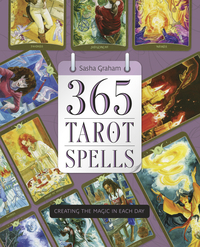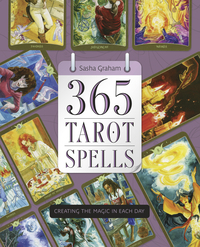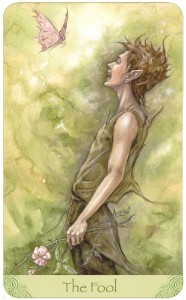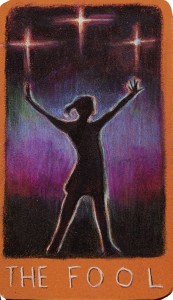Llewellyn Publications's Blog, page 54
April 15, 2016
TAME YOUR INNER CRITIC Wins 2016 IPPY Award and Silver Nautilus Award
Tame Your Inner Critic, by Della Temple, is the winner of both a 2016 Silver IPPY Award for Self-Help and the 2015 Silver Nautilus Award!
The Independent Publisher Awards or IPPYs, are designed to bring increased recognition to the deserving but often unsung titles published by independent authors and publishers.
The 2016 Independent Publisher Awards (IPPYs) were revealed via an announcement on their website.
The Nautilus Book Awards is an annual accolade of books in the genre of social and environmental justice. The full list of 2015 winners will be posted on their website by the end of the month.
Congratulations to Della Temple and Tame Your Inner Critic!
April 13, 2016
Mercury Retrograde Protection Bag
The lovely and very wise Sasha Graham has a new book in her 365 series: 365 Tarot Spells: Creating the Magic in Each Day. You can find out more HERE.
May 15 is Mercury’s birthday (according to the Romans), so Sasha’s spell for that day is the Mercury Retrograde Protection Bag. Since the next retrograde is April 28 – May 22, 2016, I thought this would be a great time to share this spell. It will give you a taster of her book and help you prepare for the upcoming retrograde. Here is it:
Ingredients
The World
10 dimes
Feather (preferably found outside)
Loose sandalwood incense
Method, Visualization and Meditation
Mercury retrograde is an astrological term used when the planet Mercury creates an optical illusion to earth gazers. It passes the earth and appears to slow down, stop, and begin moving backwards. Even thought the planet isn’t actually stopping and spinning back, Mercury retrograde is known as a time period where well laid plans, contracts, and technology go haywire. It is impractical to stop your life, cancel trips, stop legal proceeding etc., when a retrograde occurs. If the retrograde bothers you, craft this protection bag and let the effects of retrograde roll right off your back.
The World card represents all aspects of your life operating with ease. Dimes and their silver tint are sacred to Mercury. Each dime has an edge with 118 ridges. This number reduces to the number one and represents the continuation of a cycle. Feathers connect to the element of air and speed.
Place the World card before you. Focus on the revolution of the items on the card around the world dancer as if you observed the solar system itself. Everything is moving in perfect time. Everything is where it needs to be. When you are centered, when the world dancer is centered, nothing will throw you off balance. Remember, you are your center. Nothing shall throw you or your life off balance.
Divide the incense in half. Light one half, placing the other half in the bag. Take each dime and move it in a circle over the World card, pass through the lit incense smoke, and place in the bag. Take the feather, your gift from the sky, and make a circle over the world card, pass it through the incense smoke, and place it in the bag. Secure bag and chant the incantation three times.
Incantation
Mercury retrograde
Let me be
Your influences stay
Far away from me.
April 8, 2016
Find Your Present in the Mindful Revolution
Monday marked my 5 year anniversary at Llewellyn. Hoorah! Anniversaries often become moments of pause where we reflect on the past, commemorating a significant date and events that have unfolded over time, but it’s been a very mindful week around here! Instead of looking to the past, we’ve been all about finding ourselves in the present moment.
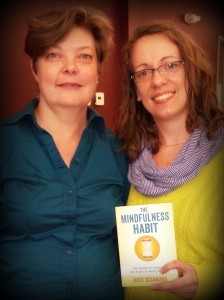
.
Yesterday Kate Sciandra, author of The Mindfulness Habit: Six Weeks to Creating the Habit of Being Present, came to talk about her book and share simple practices we can make use of throughout our everyday lives. “This doesn’t have to be difficult or painful,” she stressed. “You don’t need to go off on a 10 day retreat to learn this. If nothing else, just come back to your breath. Notice how you’re breathing. Breath can lead you to feelings of anger and panic, but deep calm breathing can take you to a place of less stressed emotion.”
We all took a moment for some deep breaths and then practiced listening to our surroundings. Minds wandered, but we all did our best to come back to our breath and place our attention toward hearing what was around us. “It does get easier,” she promised. Her grounded presence was encouraging (see the end of this post for a breathing practice you can try).
From Time magazine to the yoga studio, and maybe even your child’s classroom, the mindful revolution is making its rounds. But why? If you want to achieve calmness, better health and happiness, and practice a more sustainable lifestyle, mindfulness can help you reach your goals. And it’s a practice that can be applied to virtually every aspect of your life.
Like many others, I live incessantly in the future (worry) and past (guilt and regret). Thus, my present is often a tangle of anxiety and Eeyore hum drum. Thanks to this trend of mindful focus, I’ve become aware of the unhealthy tricks our minds play and have been learning how to be here now, in this moment.
As Sciandra noted, mindfulness allows you to notice your reactions as they are bubbling up, before you release them into the world. As a result, you gain space to pause and choose how you want to proceed instead of living from the automatic reactivity most of us are guided by. “This can change your entire life,” she passionately declared.
She’s not the only one trying to shout this from rooftops and help our overwhelmingly stressed world. Today Llewellyn releases a book two years in the making to help you find balance and be where you are. It’s a big book with a whole lot of heart. In Llewellyn’s Complete Book of Mindful Living you’ll find a comprehensive gathering of awareness and meditation practices for living in the present moment. Contributors discuss basic understanding and practices, health, loving your body, reaching potential, and the importance of subtle energy and spirit. I’ll let it speak for itself:
This book is a team effort. A variety of leaders in the field of meditation and mindfulness came together to contribute chapters on their specific areas of expertise. Each author has a strong personal and professional background in the topic they offer.
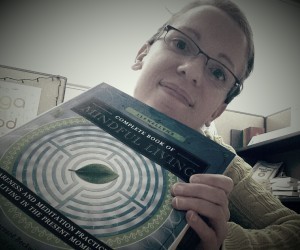
.
Michael Bernard Beckwith, William L. Mikulas, Amy B. Scher, and Keith Park give you foundational ideas on mindful practice and stress reduction. Danielle MacKinnon, Angela Wix, Rachel Avalon, Melissa Grabau, Sarah Bowen, Jeanne Van Bronkhorst, and Servet Hasan share facets of health-related mindfulness practices. Inspiring love for your body, Rolf Gates, Melanie Klein, and Mark A. Michaels and Patricia Johnson offer wisdom and guidance. Ana Holub, Guy Finley, Jack Canfield, Deborah Sandella, Tess Whitehurst, Alexandra Chauran, and Shakta Khalsa inspire you to reach a higher potential through your mindful endeavors. Thomas Moore, Cyndi Dale, and Sherrie Dillard offer perspectives on the more subtle spiritual aspects of mindfulness practice. Each of these unique voices rings with truth and enthusiasm so that you, the reader, have access to a complete guide for mindful living.
The voices of the book’s introduction, as well the introductions to each section, are offered by Robert Butera and Erin Byron, who also contribute chapters. Robert and Erin have a combined fifty-year practice in meditation and mindful living…
When we witness our inner experiences objectively, there is great potential for improvement in our lives. This book was written with you, the reader, in mind. Knowing that mindfulness is a deeply personal path, this book is designed so that you can begin at the place that is most relevant for you, immediately applying the information and practices therein.
We wish you the best on this path of mindful living.
This new book releases today. Until your book arrives, enjoy this relaxing practice of soothing sounds and breathwork. This clever video even let’s you set the speed you want to comfortably breathe in time with the expansion and contraction of the shapes.
Find your peaceful present and have a happy Friday, everyone!
March 29, 2016
Fool Card Connection Ritual
Tarot and magic have been close companions for many decades. In her new book, 365 Tarot Spells, Sasha Graham shows us how to tap into the powerful energy of the cards and how to manifest that energy beautifully into our every day lives.
This exciting book is available in May and you can learn more HERE.
Until then here is a a little teaser, just in time to help you tap into the glorious energy of The Fool, just in time for Spring. The spell is listed on April 1st, which makes sense, but know that you can do these spells anytime it is appropriate for you.
The Fool from Tarot of the Hidden Realm
April 1st
Fool Card Connection Ritual
Today
Today is April Fool’s Day. Spring bursts forth in unexpected ways as does the trickster pictured on this card. What better time than to connect with the archetypal energy of fool’s folly?
Ingredients
The Fool
Method, Visualization and Meditation
Enter the arcana of the Fool.
Say hello to the true mascot of tarot. Stand on the threshold as so many other have before you.
Everyone ignores the Madman, dancing on the edges of reality. Are you mad to enter the tarot? You can not turn away, you follow his maniacal laughter and stand atop a mountain peak. The Fool prances before you. The sun casts blinding white light of potential upon your upturned face. The Fool carries a white rose, symbolic of innocence. Only the innocent would follow his example. Only those who are pure of heart can follow his course. Can you forget all you know? Would you risk it? The Fool risks everything because he has nothing. With nothing to lose, you have everything to gain.
Leave your preconceived notions at the door. Shed your clothing. Rules? Throw them out the window. The Fool knows neither up or down. The Fool is ridiculous. The Fool is an opening. Can you hear his maniacal laughter?
The sacred symbol of all life, the circle, the zero, hangs above his head. No thing. It is the shape of the solar system, our planet, your eyes, a clock, an egg, the very shape of the molecules building your body. To enter the O is to enter the physical world. O is manifestation of physical reality. O is us as far as we can explain and experience ourselves. O is the beginning of the tarot. Is is also the end. The Fool is both ascended master and novice. Enter the mystery.
Begin your adventure.
Incantation
Doorway, thresh hold, ground I stand,
What is this foreign, mystic land?
Answers sought, questions known,
Through this territory I shall roam.
Trod this path, like souls before,
Search until I find my door.
Search woolen pockets, pluck the key,
As I unleash infinity.
The Fool from the Raven’s Prophecy Tarot
March 22, 2016
Honoring the Stones
Readers, please enjoy this guest blog post by J.A. Kent, PhD, author of the new Goddess and the Shaman.
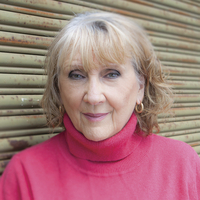 In his seminal book Voices of the First Day (1991), Robert Lawlor writes about an experience he had while visiting Arizona in the company of a Cherokee man. The man—Willy Whitefeather—sat playing his flute to a nearby group of large rocks. When Lawlor asked why he did this, Willy replied that the stones were like tired, lonely, and sad old people that lived in a hollow world because the white world had become so blind and selfish. White people did not understand that all things have consciousness—even stones. Willy explained that rocks contain silicone crystals, through which they could hear. The stones were waiting to be sung to. He said that the Cherokee had always honored the stones for their strength, beauty, and endurance. To the white world, they were inanimate, unloved objects that had no vitality, feelings, or consciousness. They were, however, valued in Western cultures for their ability to make money for careless profiteers.
In his seminal book Voices of the First Day (1991), Robert Lawlor writes about an experience he had while visiting Arizona in the company of a Cherokee man. The man—Willy Whitefeather—sat playing his flute to a nearby group of large rocks. When Lawlor asked why he did this, Willy replied that the stones were like tired, lonely, and sad old people that lived in a hollow world because the white world had become so blind and selfish. White people did not understand that all things have consciousness—even stones. Willy explained that rocks contain silicone crystals, through which they could hear. The stones were waiting to be sung to. He said that the Cherokee had always honored the stones for their strength, beauty, and endurance. To the white world, they were inanimate, unloved objects that had no vitality, feelings, or consciousness. They were, however, valued in Western cultures for their ability to make money for careless profiteers.
I understand that the Cherokee way of respecting and honoring the stones was also a way of respecting and honoring the “Great Spirit” that had created them.
Crystal healers know that crystals and stones, like water, can take an imprint, and that their energy can be radiated and used for healing. The way to motivate the stones to share their energy in this way is to project love to them and ask their compliance—to show respect and gratitude and to honor them.
If you have stones, rocks, or crystals in your possession, please realize that they have consciousness, feelings, and inner ways of knowing. They are growing in consciousness and learning, as are all other life streams. They respond to love and care and have the potential to be helpers and healers to other life forms, including the human life streams.
If you have them in your home, play some lovely music for them; put them within the proximity of indoor plants or flowers, or burn some beautiful incense for them. They also benefit from smudging with white sage or other purifying plants.
They also, from time to time, like to be outdoors in the wind, sun, and rain, or to be buried for a time back into the earth to reconnect with the matrix that was their original nurturing environment (or mother, if you like).
They are the bones of the Earth mother upon everything in nature is built—the plant kingdom absorbs nutrients and minerals from bones of the Earth and the animal kingdoms either directly or indirectly absorb nutrients and minerals from them as well. Human life would not exist without them, yet we ignore them or treat them with disdain. We blow them up, or poison them, or treat them as commodities.
They are the “Earth” of the four directions in magical ritual Let us bring them in from the cold as an honored part of our world community and as part of our human role as stewards of the planet and all its planetary life forms.
Our thanks to J.A. Kent for her guest post! For more from J.A. Kent, read her article, “The Politics of Divinity.”
March 15, 2016
Learn to Spot Major Aspects Quickly and Easily in a Chart
Readers, please enjoy this guest blog post by Amy Herring, author of Astrology of the Moon and the new Essential Astrology.
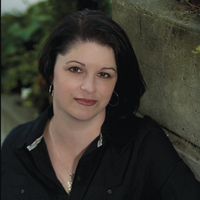 Almost any astrology software or chart calculation website will also include an aspect grid: a table that shows you where all the planetary aspects are in your chart. This can be a handy, thorough guide to keeping track of all the chart aspects, but you can learn to spot the major aspects quickly in a chart just by eyeballing it. Here’s how to do it.
Almost any astrology software or chart calculation website will also include an aspect grid: a table that shows you where all the planetary aspects are in your chart. This can be a handy, thorough guide to keeping track of all the chart aspects, but you can learn to spot the major aspects quickly in a chart just by eyeballing it. Here’s how to do it.
Pick any planet in a chart and note its sign and degree. For example, let’s use the Sun at 19° Sagittarius. Now, add and subtract your preferred orb amount to that degree number to get a range. Let’s use a 5° orb to add and subtract from 19, which gives us a range of 14-24 degrees.
Moving counterclockwise and ignoring house cusps, count two signs over to the neighboring sign. Is there any planet, angle, asteroid or point within your degree range there? In our example, we’d count two signs over to Aquarius and look for planets in that 14-24 degree range. Any planets there are sextile the Sun in Sagittarius.
Return to your starting planet, and repeat the process, this time counting three signs, not houses, counterclockwise. Any planets in your degree range in this sign are square your starting planet. In our example, a planet within the range of 14-24 degrees of >a href=”http://www.llewellyn.com/encyclopedia... is squaring the Sun.
When you’ve checked all the way to the opposite side of the chart counterclockwise (six signs away from your starting planet), return to your start position and repeat the process going clockwise this time.
Remember:
A planet in the same sign as your starting planet is conjunct (0°).
A planet two signs away from your starting planet is sextile (60°).
A planet three signs away from your starting planet is square (90°).
A planet four signs away from your starting planet is trine (120°).
A planet six signs away from your starting planet is opposite (180°).
Using this technique will help you find all of the major planetary aspects in a chart. Just repeat for each planet until you’ve checked them all. This trick will even work for a couple of the minor aspects:
A planet one sign away from your starting planet is semisextile (30°).
A planet five signs away from your starting planet is inconjunct (or quincunx—150°).
This process works because the signs are all a uniform 30 degrees wide, but the houses vary in size, so counting signs instead of houses will keep things consistent. Yet, there are exceptions to the ease of this method. Minor aspects such as the 72° quintile or 135° sesquisquare (say that five times fast) won’t lend themselves easily to this eyeball method, and out-of-sign aspects can make your sign count seem confusing, but you’ll get the majority of the important planetary connections in any chart in the blink of an eye with this technique. I discuss tips like this and much more in my new book, Essential Astrology: Everything You Need to Know to Interpret Your Natal Chart.
Our thanks to Amy for her guest post! For more from Amy Herring, read her article, “Interpreting Whole Sign and Out-of-Sign Aspects.”
March 9, 2016
The #LlewellynColoringBook Contest Is On!
As you are likely aware, WE HAVE COLORING BOOKS. Big news—and we are super stoked!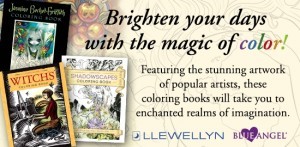
Since their release, we’ve been seeing some great pieces of art online from fabulous folks who have already picked up their copies…and we want to see more!
We want you to share your colored images from any of our coloring books (Llewellyn’s Witch’s Coloring Book, Llewellyn’s Shadowscapes Coloring Book, and the Jasmine Becket-Griffith Coloring Book)—for your chance to win one of three $100 credits to be used on www.Llewellyn.com!
Here’s how to enter:
Facebook: Send us a direct message on our Facebook page with your colored image from one of our three coloring books.
Twitter: Tweet your picture @LlewellynBooks. Be sure to use #LlewellynColoringBook in your message so that we are sure to see it!
Pinterest:: Visit our contest board at https://www.pinterest.com/llewellynbooks/llewellyncoloringbooks-contest/. Submit your colored image either via direct message, or by posting to one of your own boards using #LlewellynColoringBook, and we’ll add your image to our board.
Contest rules and other nitty-gritty:
Entries will be accepted through March 31, 2016, at 12pm CDT. (Haven’t picked up your copies yet? There’s still time to order and get coloring before the deadline!)
Three winners will be chosen, at random, on April 1, 2016. One winner will be selected from our Facebook submissions, one will from our Twitter submissions, and one from our Pinterest submissions.
You can enter more than once, but participants can only be selected as a winner once. If their name is drawn twice, that particular drawing will be re-drawn.
Have any other questions? Excited to get started? Let us know in the comments below!
March 8, 2016
Sacred Scents for Divine Alignment
Readers, please enjoy this guest blog post by Margaret Ann Lembo, author of Chakra Awakening; The Essential Guide to Crystals, Minerals, and Stones; and the new Essential Guide to Aromatherapy and Vibrational Healing.
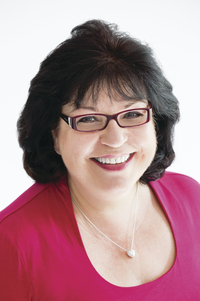 Aromatherapy isn’t just for smelling! Essential oils are powerful allies—mentally, physically, spiritually, and emotionally. They contain potent chemical components and have the ability to deter a wide range of bacterial, fungal, viral, and/or other disease-causing microorganisms. Aromatherapy is effective on an energetic level to restore balance. The energetic vibration goes beyond the sense of smell and these wonderful components. Each essential oil holds a signature that can be teamed with signs of the zodiac, power animals, numerology, and even divination.
Aromatherapy isn’t just for smelling! Essential oils are powerful allies—mentally, physically, spiritually, and emotionally. They contain potent chemical components and have the ability to deter a wide range of bacterial, fungal, viral, and/or other disease-causing microorganisms. Aromatherapy is effective on an energetic level to restore balance. The energetic vibration goes beyond the sense of smell and these wonderful components. Each essential oil holds a signature that can be teamed with signs of the zodiac, power animals, numerology, and even divination.
Here is a peek into the vibrational level of four essential oils opening to step beyond the ordinary.
Eucalyptus’ medicinal scent is penetrating, peppery, and powerful. The vibration of this oil aligns with Aries and Mars, therefore providing the momentum to make changes through the numerological association of 5 and 55. Porcupine as a power animal teams well with eucalyptus through the vibrational medicine of rising above challenging situations through the breath while deflecting negative energy. With lapis lazuli or sodalite in hand, eucalyptus is perfect to calm you while you release unhealthy attachments.
Frankincense brings wisdom and connection with inner peace and calm. Its respiratory gifts open the breathing passages, making it a perfect tool for meditation. It carries the master number vibrations of 11, 22, 33, and 44 with its Aquarian and Piscean vibration. Elephant is the main totem, though all animals relate well with frankincense. Frankincense helps us to remember that all things are possible. It teams with apophyllite to aid in grasping the connection to the Divine.
Lavender offers sweet transformation. Attraction to this scent signals a time to comfort yourself as you take it into your own hands to do what takes to make your life happy. The power animals, puppies and kittens, epitomize the vibration of this effective essential oil. It’s my favorite go-to scent, and is the most popular with friends and clients. The list of therapeutic properties is quite long. This oil also carries the master number vibrations and aligns with Virgo and the Moon, to name a few.
Patchouli says, “Who doesn’t want love and money?” It helps brings focus to promote action toward increasing both love and money through the vibration of the planet Uranus. This Aquarian scent grounds and elevates to open your consciousness as you listen for your soul’s truth. The totem animal is the peacock, to aid you as you acknowledge your dreams and goals. The message is to take the time to look at things from different angles.
Each essential oil and complementary vibrational tool offers options for helping you to achieve a deeper spiritual connection. When it comes to aromatherapy and the energetic essence of the essential oils, it all starts with understanding how powerfully our sense of smell shapes our moods and behaviors. Aromas have an effect on our moods, decisions, and even on our ability to comprehend, remember, and process feelings and emotions.
Our thanks to Margaret Ann for her guest post! For more from Margaret Ann Lembo, read her article, “16 Aroma-Energetic Wellness Tips.”
Interview with Scott Murphy and Elisabeth Alba
Today we have a very unique opportunity to hear from two artists who recently completed two different decks. The artists also happen to be married. Elisabeth and Scott graciously took the time to answer some questions for us.
Modern Spellcaster’s Tarot by Melani Marquis and Scott Murphy, Fall 2016 (available for pre-order HERE)
Everyday Witch Tarot by Deborah Blake and Elisabeth Alba, Winter 2017
1. What was your favorite part of working on this project?
Elisabeth: Seeing it all come together is truly amazing! The process is fun, especially the painting (I love coloring), but I always get a thrill when I see the finished product of whatever I’m working on, the result of all that hard work! I can’t wait to see it printed and I’m excited to see how the package design looks.
Scott: I really enjoyed getting to explore deeper into the symbolism of the cards. I didn’t know all that much about tarot before starting this project, so it was an interesting learning experience for me. Creating such a large body of work and seeing it come together into a full deck is also a very gratifying experience. It’s difficult to envision how the deck will look at the beginning of the project, but slowly you start to see the result emerging as a whole and it makes all of the hard work pay off.
2. What was the most challenging?
Elisabeth: The amount of work is daunting. A year and a half sounds like a long time… but for 79 paintings, it isn’t! Scott had started his deck months before I started mine, so I had an inkling of how much work it would be and it definitely made me nervous. Also sometimes it gets tough to work on the same project so intensely for so long. Sometimes I wished I had more time to refresh my brain by working on something else… yet there was no time to take on many other projects. I wanted to make each image a solid composition, and make sure that they didn’t all look the same. I didn’t want to fall behind, feel more overwhelmed, and rush through any of them.
Scott: I think for me a big challenge was trying to stay motivated and focused while balancing the many other aspects of life. When I started my deck I was in the midst of grad school, so I had to do a lot of juggling many different paintings at a time. Elisabeth and I were also in the process of planning our wedding, and even though she was doing a lot of the important stuff, it was still something I was giving a lot of attention to in addition to other commissions. Working so long and intensely on a project of this size was quite tricky and at times discouraging, but it proved to be a good exercise for me to push through and stay on task until the end. After painting three to four illustrations a week for such an extended period of time, now I feel like I can take on almost any project.
3. What surprised you the most?
Elisabeth: How much I continued to enjoy working on it, even with my occasional bouts of wanting to do something different. I’ve gotten sick of working on long-term projects before, to the point of hating them, but even while painting the 79th image, I was still having fun, and still pleased with my work.
Scott: I’m surprised by the warm enthusiasm of the tarot community. Ever since I started this project I have seen and received many nice comments from fans excited about the art and looking forward to the deck. There has been more positive reaction to the works I’ve done for the deck by tarot fans, than many of my illustrations created for non-related projects, and it’s really great to know that people enjoy what I’ve worked so hard to create. I hope once the deck is released that it lives up to their expectations!
4. What did you know or think about tarot before taking this project on and how did it change after the project?
Elisabeth: Admittedly, I didn’t know much. I’d had tarot readings before, and I always appreciated the art on decks I had seen, but once Scott and I started working on our decks, I could really see how huge the community was and how different decks could be, even ones based on Rider-Waite-Smith. I had no idea how many decks were in existence, or how many continue to be made, and not just through Llewellyn. It’s a whole new world!
Scott: I was fairly unknowing about tarot when I was approached to create my deck. I had been familiar with the various cards through seeing projects that other artists had worked on, but not much beyond that. But through working on the deck, I ended up doing a lot of research on the different cards and their meanings, as well as purchasing a couple decks for myself. So while I still don’t know a ton about every single card, I appreciate the decks a lot more than I used to.
5. Did you talk to each other about the cards, their meanings, the direction you were given by your authors, about the similarities and differences?
Elisabeth: All the time! We work in the same room together so it was bound to come up each time we got started on new images. It was interesting that our decks were both based on the Rider-Waite-Smith deck, but they have totally imagery, feelings, and atmosphere from each other. Scott’s is a more serious and dark deck. Mine is more lighthearted. Stylistically, Scott’s is more realistic and painterly, done with oil, mine is more brightly colored in a whimsical style, done with watercolor and ink.
Scott: There was a period of time when Elisabeth and I were both working on our decks simultaneously and we barely spoke or thought about anything other than tarot. (Elisabeth comment: And in social settings, the first thing people would ask us was “How’s tarot going?”) Every conversation was about what cards we’re working on next, which thumbnails do you like, how do you think I should show this description, can you pose for this painting, and on and on. We helped each other a lot with feedback on sketches, or modeling for reference photos. I don’t know if I could’ve gotten through the deck without Elisabeth’s help on some aspects of the process, so in some cases I’d say we had a real team effort, even if just for moral support.
6. Would you ever work on another tarot deck again? If so, any particular theme or style you’d be most excited about?
Elisabeth: I think so… but I need a breather and a little time to work on other projects! I don’t want all my previous clients to forget me. But now that I’ve done one, I know what to expect, and it wouldn’t seem as scary from the beginning. As for what I might like to illustrate in the future if I were to do another — I love fantasy and fairy tales! I love looking at and drawing historical clothing, traveling to and reading about historical places, so anything that could combine any of those things would be fantastic to work on.
Scott: While I love the feeling of accomplishment after completing the full deck, I think it would be hard for me to commit that amount of time to just one project again. Especially if it’s not based on a theme that I feel closely connected to. But who knows, maybe some time down the road I’d love to work on something Tolkien themed, or any kind of Viking or Celtic mythology, or dark fantasy, but I’d need more time so I could really paint them big!

Justice from the Modern Spellcaster’s Tarot Melani Marquis and Scott Murphy
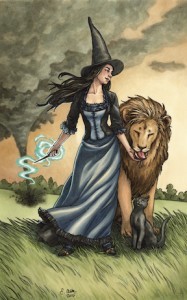
Strength from the Everyday Witch Tarot Deborah Blake and Elisabeth Alba
March 1, 2016
Use Mini-Goals to Achieve Your Big Goals
Readers, please enjoy this guest blog post by Jenny Mannion, author of the new A Short Path to Change.
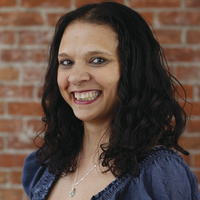 I believe in going after our goals and change with loving kindness and patience to ourselves. Many begin the new year with resolutions in mind, but if they fall off track once, they believe they have failed and give up completely. That is why I believe in goals, intentions, and mini-goals to help you achieve the change you want in your life.
I believe in going after our goals and change with loving kindness and patience to ourselves. Many begin the new year with resolutions in mind, but if they fall off track once, they believe they have failed and give up completely. That is why I believe in goals, intentions, and mini-goals to help you achieve the change you want in your life.
In assessing what you want in the different areas of your life (spiritually, emotionally, physically, mentally, financially, and relationally), you can begin to fantasize and daydream a bit about what your life would look like if all of those areas were aligned as you wanted. You can allow that daydream to tell you what your main goal or final goal and destination might be. Sometimes, if you only look at that big goal you can become overwhelmed, as it might seem so far away and out of reach. This can cause serious resistance and self-sabotage. A safer and kinder way is to begin by setting a first step or mini goal in any or all of those areas that you want to begin change in. By taking the first step you are telling the Universe you are ready for change and are taking action!
When you take that first step, don’t be surprised if you meet synchronicities to help you along the way. You are putting your energy out there, telling the Universe what you want, and often you will get a response! Say a couple of your long term-goals include having a regular spiritual practice and connecting with people in your community. You might not have a clear picture of what that ultimately looks like, but you know what you want! Your mini-goal can be to go somewhere locally—it could be a health food store, library, or meeting center, or to check a local paper and see if there are any meditation classes or places to learn meditation or another spiritual practice. In doing this one step, you might connect with people who open up a whole new world to you and want similar things in their own lives. You might come across a topic you were interested in years ago but hadn’t thought of since, and feel this deep knowing when you connect with it again. By taking one small step you give permission to the Universe to provide opportunities to continue on your path to change.
It is important to remember to be loving and kind to yourself in this process. Maybe you will not like the first class you attend, but you meet someone with whom you feel a connection. You might start one meditation or spiritual practice and feel it is not for you. Don’t get discouraged! Be loving, kind, and patient with yourself, and try again! No one will be judging you for the first thing not working out except yourself. Your end goal can change as you grow and change and get a clearer vision of what you want. If a friend came to you in this situation, you would offer hugs and words of encouragement—and that is what I will ask you to do for yourself in this process! If you go after your goals and the big picture in a vision but by taking one small step at a time while being loving to yourself, you will achieve that change and those goals and have fun enjoying the process!
Our thanks to Jenny for her guest post! For more from Jenny Mannion, read her article, “How to Begin the Process of Change.”
Llewellyn Publications's Blog
- Llewellyn Publications's profile
- 243 followers



